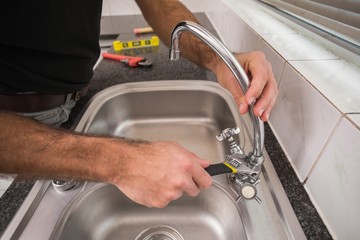If you live in a frigid climate, your outdoor kitchen must be made with durable materials. Concrete is an excellent choice, and it will not rust like metal frame systems in the salty ocean air.
Finding a contractor and creating architectural drawings can be time-consuming and overwhelming if you want an intricate custom outdoor kitchen. Keep reading the article below to learn more about Custom Outdoor Kitchen Builder.
The outdoor kitchen is one of the most sought-after design features for home owners. Not only can it be used for grilling, but it can also serve as a space to prepare food and entertain guests. This makes it a perfect addition to any backyard. However, it’s important to be realistic about your budget from the beginning of the project. Otherwise, you could end up spending more than you can afford. Here are some tips to help you create a custom outdoor kitchen that fits within your budget.
When choosing an outdoor kitchen builder, it’s important to find one that specializes in these projects. They’ll understand how to best use the space to suit your needs and will be able to recommend all the features you’ll need. In addition, they’ll be able to give you an estimate before starting the project so that you know what to expect.
A quality outdoor kitchen builder will have an extensive portfolio of past projects to show you. This will help you get a feel for their work and the style of backyards they’re accustomed to working with. This will allow you to make an informed decision about which company to hire.
Another thing to look for is a design tool that allows you to customize your project. You’ll be able to choose your dimensions, appliances, cabinet style, and more with this tool. It’s an easy and convenient way to plan your backyard kitchen and ensure that it will be exactly what you want.
In addition, the design tool will help you decide what type of island you want for your space. You’ll be able to select from linear, L-shaped, U-shaped, and galley-style islands. You’ll also be able to choose whether you want to have an open or enclosed design.
When building your backyard kitchen, you’ll be able to choose from several different cabinet styles and finishes. There’s even a choice of material for your countertops. From stainless steel to granite, sandstone, and concrete, there’s sure to be something that matches your vision for your backyard kitchen.
Appliances
When it comes to building a custom outdoor kitchen, the options are nearly limitless. That’s why it’s important to have an idea of your budget before beginning the design process. You don’t want to pour your heart and soul into a dream backyard oasis only to find out that you’re not able to afford it. That’s why we suggest that you talk to a contractor and request an estimate early on.
The most expensive part of an outdoor kitchen is the appliances themselves. This is because they need to be durable enough to withstand the elements, which includes high temperatures, wind, rain and snow. This is why most outdoor kitchens are built with stainless steel appliances, as they are more likely to withstand the harsh weather conditions.
Having a few appliances in your outdoor kitchen will help you prepare and serve food for your friends and family. This means that you’ll need a grill, a fridge and perhaps a sink or two. Most kitchen designers include a sink in their designs to make it easy to wash dishes and clean your equipment. This helps prevent the spread of germs and makes mealtime much more enjoyable.
Most outdoor kitchens are designed with extra space for storage, so that you can keep your cooking utensils and other supplies neatly organized and accessible. This is particularly helpful for larger outdoor kitchens, where it can be difficult to get to items. Adding cabinets or drawers can save you time and hassle and ensure that your kitchen is always ready to go.
Some outdoor kitchens also feature a teppanyaki grill or smoker to enhance the culinary experience and entice your guests. Other appliances that can add value to your outdoor kitchen include side burners, an ice machine and a blender or mixer for smoothies or martinis. Some manufacturers offer outdoor rated dishwashers for ease of cleanup after entertaining, as well.
Many people choose to build a covered outdoor kitchen in order to make their backyard a year-round living and entertaining space. Having a roof over your outdoor kitchen will allow you to use the space regardless of the weather and will help extend the life of your appliances. It’s also possible to incorporate other amenities such as fans, heaters and overhead lighting into the design of your custom outdoor kitchen.
Seating
For many homeowners, the centerpiece of an outdoor space is a large dining table and seating area. The design of your outdoor kitchen should complement that furniture to create a cohesive, functional space for entertaining and relaxing. This might mean adding bar stools, benches, oversized lounge chairs, ottomans, and even rugs to the design.
Another crucial factor when planning your outdoor kitchen is the size of your space. If you have a small yard or patio, your options will be more limited, but if you’re working with ample space, an L-shaped or U-shaped layout will allow you to take full advantage of the available area.
Once you’ve determined your size and layout, it’s time to start designing your outdoor kitchen. The best way to do that is by using a 3D design software like Custom Outdoor Kitchen Builder. This program lets you see what your project will look like with a few clicks of the mouse.
You’ll be able to move around cabinets and appliances as if you were standing in the kitchen, and then zoom out for a bigger view. You can even create a floor plan and see the layout of the entire room. This can help you visualize how the space will function and decide what features you want to add or remove.
It’s important to be realistic about your budget at this stage, too. You don’t want to put in a lot of work on a design that you can’t afford. It’s also difficult to enjoy your new outdoor living space if you’re constantly worrying about paying bills.
Once you’ve settled on a layout, it’s time to choose the appliances and materials that will go into your custom outdoor kitchen. You can purchase a complete package from an outdoor kitchen manufacturer or work with a local contractor. Both have their pros and cons, but it’s good to keep in mind that a production builder will typically use pre-fabricated pieces to save on cost and labor. These kits might not be a fit for your backyard, and you’ll be limited in your appliance options as a result. A custom built kitchen from a local contractor, on the other hand, is often more suited to your lifestyle and budget.
Lighting
A good lighting arrangement is essential to a functional outdoor kitchen. Especially when cooking at night, you want to make sure that you can easily see what you’re doing. Lighting can also help to create a warm and inviting atmosphere.
A chandelier is a great option to light the space. It can create a beautiful effect, and the lighting can also be adjusted to fit your preferences. Alternatively, you can install recessed lighting or track lights over the countertop. You can also add LED strip lighting to illuminate the countertops or other areas of your outdoor kitchen. This can give your space a modern, sleek look.
If you have a grill and pizza oven, you should consider adding some task lighting to your outdoor kitchen. For example, the Blaze double drawer has a very handy internal LED light element to make it easy for you to use at night. Another great idea is the flexible neck Big Green Egg grill light that can be placed anywhere around your grill or the countertop. This can provide bright, focused light for your cooking tasks and also works well as a decorative piece.
Overhead lighting can also be a great choice, especially in a Florida style outdoor kitchen. This can create a more relaxed atmosphere and also works well when you’re serving food or drinks. Another option is to hang string lighting over counters and bar tops, which can create a very dreamy atmosphere. If you’re going for a more rustic look, you can also try using lanterns.
You should also think about lighting up any stairs in your outdoor kitchen. This can be very practical, as it will help to prevent people from tripping and sending the main course flying over the lawn. Well-lit stairs are also more aesthetically appealing and can help to increase the overall ambiance of your patio space.
It’s important to plan your lighting arrangements carefully so that the whole outdoor kitchen area is properly lit and you can enjoy it at night as well as during the day. It’s best to include these features when building a new outdoor kitchen, but if you’re doing a remodel, it is still possible to add some lighting later on. Just be sure to have your contractor run any gas, water or electricity lines that you need before you begin installing these features.

















